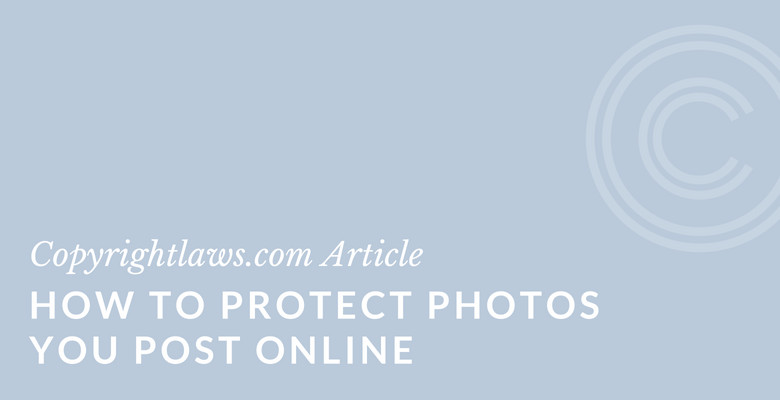In today’s digital age, where sharing photos online is commonplace, understanding how to copyright your photos is more critical than ever. Whether you’re a hobbyist snapping pictures with your smartphone or a professional photographer building a portfolio, your images are valuable assets that deserve protection. Many photographers are unaware that copyright protection is automatically granted the moment you capture an image. However, to fully safeguard your work and enforce your rights, taking proactive steps is essential. This guide will walk you through everything you need to know about how to copyright your photos, ensuring your creative work is legally protected and you are equipped to manage its use online.
Understanding Automatic Copyright Protection for Your Images
The good news for photographers is that copyright protection is automatically in effect the instant you take a photograph. This is thanks to international agreements like the Berne Convention, which the U.S. and over 180 other countries have signed. From the moment you press the shutter button on your camera, be it a professional DSLR or your smartphone, the resulting image is legally protected.
This automatic protection means you inherently own the rights to control how your photographs are used. You don’t need to formally register your work or include a copyright notice to gain this initial protection. As soon as your photograph is “fixed” in a tangible medium – saved on your camera’s memory card, your phone, or your computer – it’s copyrighted. This fundamental aspect of copyright law is crucial for every photographer to understand, regardless of their experience level.
 Photographer taking pictures outdoors, emphasizing automatic copyright the moment of capture
Photographer taking pictures outdoors, emphasizing automatic copyright the moment of capture
Practical Steps to Enhance Your Photo Copyright Protection
While automatic copyright provides a base level of protection, there are several proactive measures you can take to strengthen your copyright and make it easier to enforce your rights, particularly when sharing photos online. These steps range from simple actions like adding a copyright notice to more formal processes like registering your photos with the U.S. Copyright Office.
Using the Copyright Symbol and Notice: A Simple Deterrent
One of the easiest and most immediate steps you can take is to add a copyright notice to your photos. This simple act serves as a clear visual reminder to anyone who views your work online that it is protected by copyright and that you are asserting your ownership. While not legally required for copyright to exist, including a copyright notice is a best practice, especially when publishing photos on websites, blogs, social media, or online marketplaces.
A standard copyright notice includes three key elements:
- The Copyright Symbol: Use the symbol “©”, the abbreviation “Copr.”, or the word “Copyright”.
- Year of First Publication: Include the year the photograph was first made publicly available.
- Name of the Copyright Owner: This is usually your name or the name of your photography business.
For example, a copyright notice might look like: © 2023 [Your Name]. This notice can be added as a watermark directly onto your digital images or included in the metadata of the image file. It’s a straightforward way to communicate your copyright and deter unauthorized use.
Registering Your Photos with the U.S. Copyright Office: Legal Reinforcement
For more robust copyright protection, especially if you intend to license or sell your photos, registering your images with the U.S. Copyright Office (USCO) offers significant advantages. While not mandatory for copyright to exist, registration provides a public record of your copyright claim and is crucial for enforcing your rights in court.
The benefits of registering your photos include:
- Prima Facie Evidence: Registration within five years of publication establishes legal presumption in court that your copyright is valid and that you own it. This simplifies proving your ownership in infringement cases.
- Prerequisite for Infringement Lawsuits: In the U.S., you must register your copyright before you can file a lawsuit for copyright infringement for works of U.S. origin.
- Statutory Damages and Attorney’s Fees: If you register your photos before infringement occurs or within three months of publication, you become eligible to claim statutory damages and attorney’s fees in a successful infringement lawsuit. These can be significantly higher than actual damages and lost profits, providing a stronger deterrent against infringement.
You can register your photos online through the USCO’s website. While there is a registration fee, the legal benefits and enhanced protection registration provides are often well worth the investment, especially for professional photographers or those concerned about online photo theft.
Leveraging Creative Commons Licenses: Balancing Protection and Sharing
If your goal is to allow certain uses of your photos while still retaining copyright ownership, consider using a Creative Commons (CC) license. CC licenses offer a flexible way to grant permissions for others to use your work under specific conditions. You can choose from various types of CC licenses that dictate whether others can share, adapt, or use your work commercially, and whether they must give you attribution.
Creative Commons licenses are ideal for photographers who want to encourage sharing and collaboration while maintaining control over how their images are used. By applying a CC license, you clearly communicate what uses are permitted without needing to grant individual permissions each time. However, it’s important to understand the terms of each CC license type to choose one that aligns with your sharing preferences.
Proactive Monitoring and Enforcement: Protecting Your Copyright Online
Copyright protection isn’t just about legal formalities; it also involves actively monitoring how your photos are being used online and taking action when you find unauthorized uses. Regularly searching for your images online, using tools like Google Image Search or specialized image monitoring services, can help you identify potential copyright infringements.
If you discover your photos being used without your permission, take a proactive approach:
- Contact the Infringing Party: Send a polite but firm email or letter to the website owner or social media user, explaining that they are using your copyrighted photo without authorization.
- Request Removal or Licensing: Clearly state what you want them to do – whether it’s removing the image immediately, providing proper attribution and a link back to your website, or paying a licensing fee for past and future use.
- Document Everything: Keep records of the infringement, your communications, and any responses you receive. This documentation can be crucial if you need to take further legal action.
While resolving copyright issues can sometimes be challenging, taking these proactive steps is essential to protect your work and assert your rights as a copyright holder. In situations where informal resolution fails, consulting with a copyright lawyer may be necessary to explore further legal options.
Why Copyrighting Your Photos Truly Matters
Understanding and actively managing your photo copyright is not just about legal compliance; it’s about recognizing the value of your creative work. Your photographs are a product of your skill, vision, and effort. Copyright law is designed to protect your rights as creators, allowing you to control how your work is used, to receive credit for your creations, and to benefit financially from your photography if you choose.
By taking the steps outlined in this guide, you are not only legally safeguarding your images but also establishing yourself as a professional who respects and understands intellectual property rights. Whether you are aiming to protect your portfolio from unauthorized use, license your photos for commercial purposes, or simply control how your images are shared online, understanding how to copyright your photos is a fundamental aspect of responsible photography in the digital age.
In conclusion, while copyright protection for your photos is automatic, enhancing this protection through copyright notices, registration, strategic licensing, and proactive monitoring is crucial for effectively managing your rights in the online world. Take the time to understand and implement these strategies to ensure your photographic work is respected and protected.

